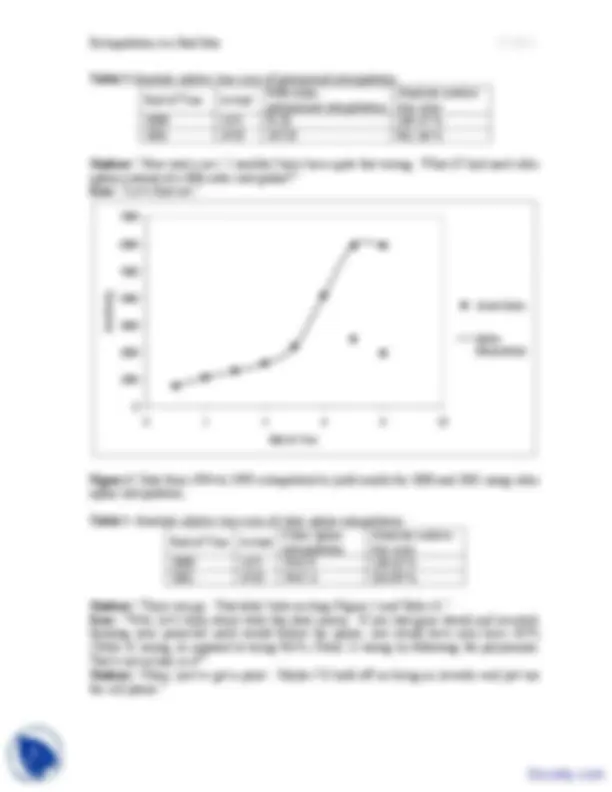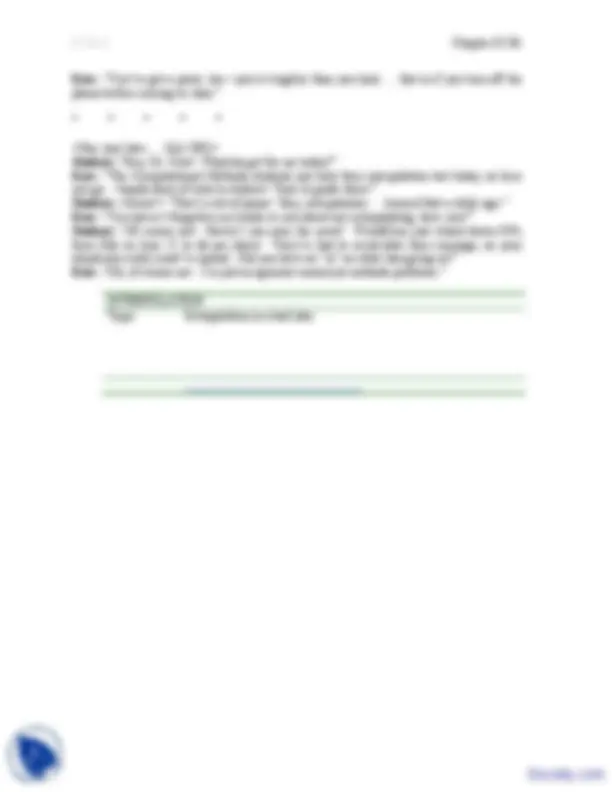




Study with the several resources on Docsity

Earn points by helping other students or get them with a premium plan


Prepare for your exams
Study with the several resources on Docsity

Earn points to download
Earn points by helping other students or get them with a premium plan
Community
Ask the community for help and clear up your study doubts
Discover the best universities in your country according to Docsity users
Free resources
Download our free guides on studying techniques, anxiety management strategies, and thesis advice from Docsity tutors
The risks and limitations of extrapolation through a case study involving a student's investment decision in worldcom's stock based on historical data. The chapter emphasizes the importance of understanding the limitations of extrapolation and the potential consequences of relying on it for future predictions.
Typology: Exams
1 / 4

This page cannot be seen from the preview
Don't miss anything!



After reading this chapter, you should be able to:
1_. understand why using extrapolation can be a bad idea._
Example (Due to certain reasons, this student wishes to remain anonymous.) This takes place in Summer Session B – July 2001
Student: “Hey, Dr. Kaw! Look at this cool new cell phone I just got!” Kaw: “That’s nice. It better not ring in my class or it’s mine.” Student: “What would you think about getting stock in this company?” Kaw: “What company is that?” Student: “WorldCom! They’re the world’s leading global data and internet company.” Kaw: “So?” Student: “They’ve just closed the deal today to merge with Intermedia Communications, based right here in Tampa!” Kaw: “Yeah, and …?” Student: “The stock’s booming! It’s at $14.11 per share and promised to go only one way— up! We’ll be millionaires if we invest now!” Kaw: “You might not want to assume their stock will keep rising … besides, I’m skeptical of their success. I don’t want you putting yourself in financial ‘jeopardy!’ over some silly extrapolation. Take a look at these NASDAQ composite numbers (Table 1)” Student: “That’s only up to two years ago …” Kaw: “That’s right. Looking at this data, don’t you think you should’ve invested back then?” Student: “Well, didn’t the composite drop after that?” Kaw: “Right again, but look what you would’ve hoped for if you had depended on that trend continuing (Figure 1).” Student: “So you’re saying that …?” Kaw: “You should seldom depend on extrapolation as a source of approximation! Just take a look at how wrong you would have been (Table 2).”
05.06.2 Chapter 05.
Table 1. End of year NASDAQ composite data End of year 1 NASDAQ 1 751. 2 1052. 3 1291. 4 1570. 5 2192. 6 4069.
0
5000
10000
15000
20000
25000
0 2 4 6 8 10 End of Year
NASDAQ
Actual Index
Polynomial Interpolation
Figure 1 Data from 1994 to 1999 extrapolated to yield results for 2000 and 2001 using polynomial extrapolation.
(^1) Range of years actually between 1994 (Year 1) and 1999 (Year 9). Numbers start from 1 to avoid round-off errors and near singularity in matrix calculations.
05.06.4 Chapter 05.
Kaw: “You’ve got a point, too—you’re brighter than you look … that is if you turn off the phone before coming to class.”
<One year later … July 2002> Student: “Hey, Dr. Kaw! Whatcha got for me today?” Kaw: “The Computational Methods students just took their interpolation test today, so here you go.
Topic Extrapolation is a bad idea